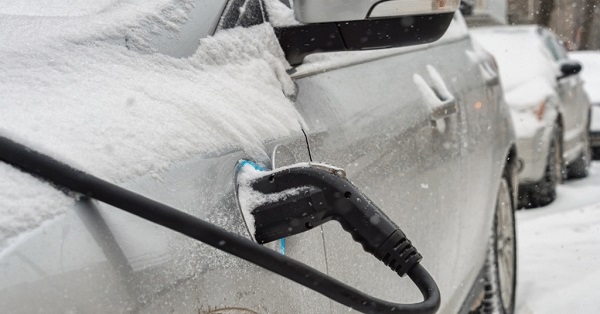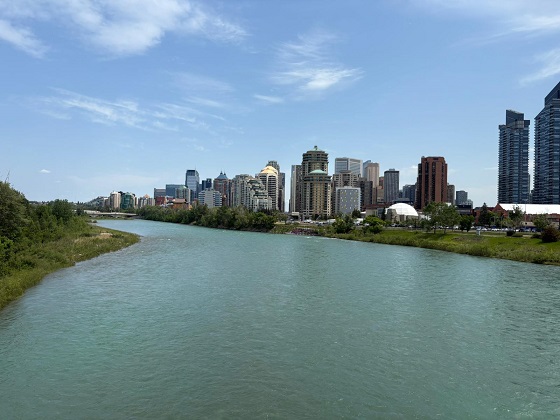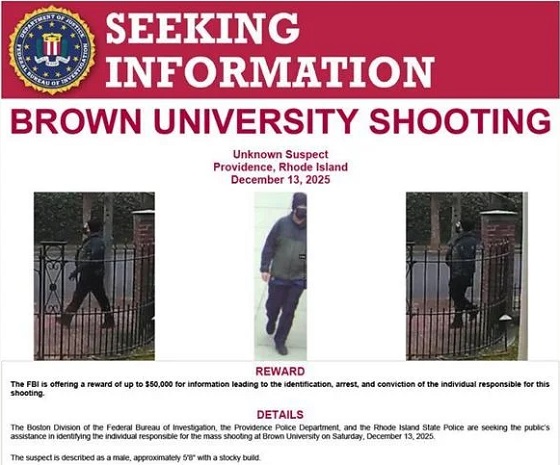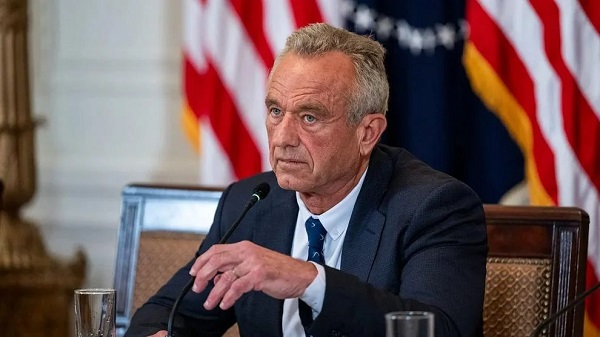Alberta
Alberta schools will stay open for now: Watch COVID-19 Update

Update on COVID-19 in Alberta from The Province of Alberta
The Emergency Management Cabinet Committee is recommending schools remain open with mitigations in place to protect the health of Alberta teachers and students.
All publicly funded schools will remain open at this time, provided steps are taken to eliminate large congregations of students. No more than 250 people should be in the same room at any time. Additionally, it is recommended that sports and other extracurricular activities that involve physical contact be cancelled as an additional precaution.
Post-secondary institutions have not been advised to close at this time.
“I understand and appreciate many Albertans are concerned about their children and the risk of COVID-19. Students should not be worried about attending class at this time. However, I encourage school boards to take these precautions and remind your staff and students about the personal steps they too can take to protect themselves from COVID-19.”
For additional advice, a guidance document for schools and child care programs is in development and will be made available online at alberta.ca/COVID19.
Changes to employment rules
Government is acting quickly to improve employment rules to protect Albertans by implementing paid job-protected leave.
Changes to the Employment Standards Code will allow employees who are required to self-isolate or are caring for a loved one with COVID-19 to take 14 days of paid job-protected leave to cover the self-isolation period being recommended by Alberta’s chief medical officer of health.
There will be no requirement to have a medical note for such leave or to have worked for an employer for 90 days to qualify for such leave.
The details of how these changes will be administered will be provided in the coming days. We recognize this could put pressure on employers. As we work through the details, we are keeping this in mind and working toward solutions to address these challenges.
“We are taking COVID-19 extremely seriously and acting quickly to improve employment rules. That is why we are offering paid sick leave to help contain the spread of the virus. No one should have to choose between work and taking care of their health. We are all in this together to ensure workplaces are safe and the spread of COVID-19 is mitigated.”
New cases of COVID-19
Six additional cases of COVID-19 have been confirmed, bringing the total number of cases in the province to 29. All cases are travel-related.
One of the cases involves a man from the Edmonton zone who recently attended a conference in Vancouver and was notified that a positive case had attended the same conference. After returning, the individual visited a number of dental offices. As soon as this case tested positive, health officials took immediate action to protect the health of Albertans. All contacts who may have been at risk of exposure have been contacted for follow-up assessment and testing.
The other cases are in the Calgary zone and include a returning traveller from Florida, and four household contacts of a previously confirmed case.
All new cases are now self-isolated at home and expected to make a full recovery.
“This latest case of an individual who contracted COVID-19 at a conference indicates the risk of large mass gatherings, especially when they might involve international participants. This confirms our recommendation on mass gatherings was the right approach. We will continue to take any steps necessary to protect your health.”
Health Link 811 call volume and testing
Health Link continues to experience high call volumes, regularly receiving more than 6,300 calls daily. To help manage wait times, AHS has doubled Health Link staff and tripled call line capacity.
AHS will also be making available shortly a new online assessment tool. This tool will guide Albertans to answer questions about symptoms and take them through steps to help determine whether they need testing.
“I understand and have heard from Albertans who are frustrated about the time it takes to reach a Health Link operator. I urge Albertans to please continue being patient and to stay on the line. We will continue to work to manage Health Link wait times and ensure Albertans can get access to testing promptly.”
Albertans can help call volumes by:
- visiting alberta.ca/COVID19 for information if you don’t have symptoms or need a health assessment.
- calling Health Link during non-peak times
- not calling Health Link if you are awaiting COVID-19 test results. If you’ve been tested for COVID-19, you will be called directly with your test results
Albertans should only call 911 if it is a life-threatening emergency situation. Do not call 911 if you cannot get through right away to Health Link.
Mass gatherings and recommended travel advice
Effective March 12, health officials called for all large gatherings or international events in the province to be cancelled and advised Albertans against travel outside of the country.
Alberta is asking organizers to cancel any events that have more than 250 attendees. This includes large sporting events.
Any event that has more than 50 attendees and expects to have international participants, or involves critical infrastructure staff, seniors, or other high-risk populations should also be cancelled.
Events that do not meet these criteria can proceed, but risk mitigation must be in place, such as sanitizer stations and distancing between attendees.
Travel outside of the country is not being recommended at this time. Given the rapid global spread of the virus, it is no longer possible to assess health risks for the duration of the trip.
Additionally, public health officials are recommending that any traveller returning from outside of the country should self-isolate for 14 days, even if they are feeling well, and monitor for symptoms.
Any traveller who has returned before March 12 is not advised to self-isolate unless they have returned from Italy, Iran, China’s Hubei province or the Grand Princess cruise ship.
If symptoms do emerge, individuals are asked to call Health Link 811 for follow-up assessment and testing.
Quick facts
- The most important measures that Albertans can take to prevent respiratory illnesses, including COVID-19, is to practise good hygiene.
- This includes cleaning your hands regularly for at least 20 seconds, avoiding touching your face, coughing or sneezing into your elbow or sleeve, disposing of tissues appropriately, and staying home and away from others if you are sick.
- Anyone who has health concerns or is experiencing symptoms of COVID-19 should contact Health Link 811 to see if follow up testing is required.
- For recommendations on protecting yourself and your community, visit alberta.ca/COVID19.
Alberta
Alberta Next Panel calls to reform how Canada works

From the Fraser Institute
By Tegan Hill
The Alberta Next Panel, tasked with advising the Smith government on how the province can better protect its interests and defend its economy, has officially released its report. Two of its key recommendations—to hold a referendum on Alberta leaving the Canada Pension Plan, and to create a commission to review programs like equalization—could lead to meaningful changes to Canada’s system of fiscal federalism (i.e. the financial relationship between Ottawa and the provinces).
The panel stemmed from a growing sense of unfairness in Alberta. From 2007 to 2022, Albertans’ net contribution to federal finances (total federal taxes paid by Albertans minus federal money spent or transferred to Albertans) was $244.6 billion—more than five times the net contribution from British Columbians or Ontarians (the only other two net contributors). This money from Albertans helps keep taxes lower and fund government services in other provinces. Yet Ottawa continues to impose federal regulations, which disproportionately and negatively impact Alberta’s energy industry.
Albertans were growing tired of this unbalanced relationship. According to a poll by the Angus Reid Institute, nearly half of Albertans believe they get a “raw deal”—that is, they give more than they get—being part of Canada. The Alberta Next Panel survey found that 59 per cent of Albertans believe the federal transfer and equalization system is unfair to Alberta. And a ThinkHQ survey found that more than seven in 10 Albertans feel that federal policies over the past several years hurt their quality of life.
As part of an effort to increase provincial autonomy, amid these frustrations, the panel recommends the Alberta government hold a referendum on leaving the Canada Pension Plan (CPP) and establishing its own provincial pension plan.
Albertans typically have higher average incomes and a younger population than the rest of the country, which means they could pay a lower contribution rate under a provincial pension plan while receiving the same level of benefits as the CPP. (These demographic and economic factors are also why Albertans currently make such a large net contribution to the CPP).
The savings from paying a lower contribution rate could result in materially higher income during retirement for Albertans if they’re invested in a private account. One report found that if a typical Albertan invested the savings from paying a lower contribution rate to a provincial pension plan, they could benefit from $189,773 (pre-tax) in additional retirement income.
Clearly, Albertans could see a financial benefit from leaving the CPP, but there are many factors to consider. The government plans to present a detailed report including how the funds would be managed, contribution rates, and implementation plan prior to a referendum.
Then there’s equalization—a program fraught with flaws. The goal of equalization is to ensure provinces can provide reasonably comparable public services at reasonably comparable tax rates. Ottawa collects taxes from Canadians across the country and then redistributes that money to “have not” provinces. In 2026/27, equalization payments is expected to total $27.2 billion with all provinces except Alberta, British Columbia and Saskatchewan receiving payments.
Reasonable people can disagree on whether or not they support the principle of the program, but again, it has major flaws that just don’t make sense. Consider the fixed growth rate rule, which mandates that total equalization payments grow each year even when the income differences between recipient and non-recipient provinces narrows. That means Albertans continue paying for a growing program, even when such growth isn’t required to meet the program’s stated objective. The panel recommends that Alberta take a leading role in working with other provinces and the federal government to reform equalization and set up a new Canada Fiscal Commission to review fiscal federalism more broadly.
The Alberta Next Panel is calling for changes to fiscal federalism. Reforms to equalization are clearly needed—and it’s worth exploring the potential of an Alberta pension plan. Indeed, both of these changes could deliver benefits.
Alberta
Alberta’s new diagnostic policy appears to meet standard for Canada Health Act compliance

From the Fraser Institute
By Nadeem Esmail, Mackenzie Moir and Lauren Asaad
In October, Alberta’s provincial government announced forthcoming legislative changes that will allow patients to pay out-of-pocket for any diagnostic test they want, and without a physician referral. The policy, according to the Smith government, is designed to help improve the availability of preventative care and increase testing capacity by attracting additional private sector investment in diagnostic technology and facilities.
Unsurprisingly, the policy has attracted Ottawa’s attention, with discussions now taking place around the details of the proposed changes and whether this proposal is deemed to be in line with the Canada Health Act (CHA) and the federal government’s interpretations. A determination that it is not, will have both political consequences by being labeled “non-compliant” and financial consequences for the province through reductions to its Canada Health Transfer (CHT) in coming years.
This raises an interesting question: While the ultimate decision rests with Ottawa, does the Smith government’s new policy comply with the literal text of the CHA and the revised rules released in written federal interpretations?
According to the CHA, when a patient pays out of pocket for a medically necessary and insured physician or hospital (including diagnostic procedures) service, the federal health minister shall reduce the CHT on a dollar-for-dollar basis matching the amount charged to patients. In 2018, Ottawa introduced the Diagnostic Services Policy (DSP), which clarified that the insured status of a diagnostic service does not change when it’s offered inside a private clinic as opposed to a hospital. As a result, any levying of patient charges for medically necessary diagnostic tests are considered a violation of the CHA.
Ottawa has been no slouch in wielding this new policy, deducting some $76.5 million from transfers to seven provinces in 2023 and another $72.4 million in 2024. Deductions for Alberta, based on Health Canada’s estimates of patient charges, totaled some $34 million over those two years.
Alberta has been paid back some of those dollars under the new Reimbursement Program introduced in 2018, which created a pathway for provinces to be paid back some or all of the transfers previously withheld on a dollar-for-dollar basis by Ottawa for CHA infractions. The Reimbursement Program requires provinces to resolve the circumstances which led to patient charges for medically necessary services, including filing a Reimbursement Action Plan for doing so developed in concert with Health Canada. In total, Alberta was reimbursed $20.5 million after Health Canada determined the provincial government had “successfully” implemented elements of its approved plan.
Perhaps in response to the risk of further deductions, or taking a lesson from the Reimbursement Action Plan accepted by Health Canada, the province has gone out of its way to make clear that these new privately funded scans will be self-referred, that any patient paying for tests privately will be reimbursed if that test reveals a serious or life-threatening condition, and that physician referred tests will continue to be provided within the public system and be given priority in both public and private facilities.
Indeed, the provincial government has stated they do not expect to lose additional federal health care transfers under this new policy, based on their success in arguing back previous deductions.
This is where language matters: Health Canada in their latest CHA annual report specifically states the “medical necessity” of any diagnostic test is “determined when a patient receives a referral or requisition from a medical practitioner.” According to the logic of Ottawa’s own stated policy, an unreferred test should, in theory, be no longer considered one that is medically necessary or needs to be insured and thus could be paid for privately.
It would appear then that allowing private purchase of services not referred by physicians does pass the written standard for CHA compliance, including compliance with the latest federal interpretation for diagnostic services.
But of course, there is no actual certainty here. The federal government of the day maintains sole and final authority for interpretation of the CHA and is free to revise and adjust interpretations at any time it sees fit in response to provincial health policy innovations. So while the letter of the CHA appears to have been met, there is still a very real possibility that Alberta will be found to have violated the Act and its interpretations regardless.
In the end, no one really knows with any certainty if a policy change will be deemed by Ottawa to run afoul of the CHA. On the one hand, the provincial government seems to have set the rules around private purchase deliberately and narrowly to avoid a clear violation of federal requirements as they are currently written. On the other hand, Health Canada’s attention has been aroused and they are now “engaging” with officials from Alberta to “better understand” the new policy, leaving open the possibility that the rules of the game may change once again. And even then, a decision that the policy is permissible today is not permanent and can be reversed by the federal government tomorrow if its interpretive whims shift again.
The sad reality of the provincial-federal health-care relationship in Canada is that it has no fixed rules. Indeed, it may be pointless to ask whether a policy will be CHA compliant before Ottawa decides whether or not it is. But it can be said, at least for now, that the Smith government’s new privately paid diagnostic testing policy appears to have met the currently written standard for CHA compliance.

Lauren Asaad
Policy Analyst, Fraser Institute
-

 Business2 days ago
Business2 days agoThere’s No Bias at CBC News, You Say? Well, OK…
-

 Uncategorized1 day ago
Uncategorized1 day agoMortgaging Canada’s energy future — the hidden costs of the Carney-Smith pipeline deal
-

 International1 day ago
International1 day agoAustralian PM booed at Bondi vigil as crowd screams “shame!”
-

 Opinion2 days ago
Opinion2 days agoReligion on trial: what could happen if Canada passes its new hate speech legislation
-

 Automotive19 hours ago
Automotive19 hours agoCanada’s EV gamble is starting to backfire
-

 Agriculture16 hours ago
Agriculture16 hours agoEnd Supply Management—For the Sake of Canadian Consumers
-

 Alberta15 hours ago
Alberta15 hours agoAlberta Next Panel calls to reform how Canada works
-

 Environment13 hours ago
Environment13 hours agoCanada’s river water quality strong overall although some localized issues persist












